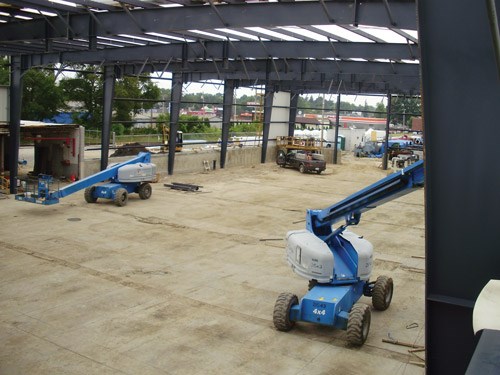A Shiny New Day for Univertical
Following $5.5 million in clean-up costs shared by Univertical (Angola, IN) and state and local governments, Chuck Walker’s company is ready to expand operations in supplying anodes and chemicals for the worldwide plating industry.
Related Content
NASF/AESF Foundation Research Project #122: Electrochemical Approaches to Treatment of PFAS in Plating Wastewater - 12th Quarterly Report
This NASF-AESF Foundation research project report covers the 12th quarter of project work (October – December 2023) at the University of Georgia. In our previous report, we described our work on performance and effect of surface fluorinated Ti4O7 anodes on PFAS degradation in reactive electrochemical membrane (REM) mode. This quarter, our experiments involved utilizing porous Ti4O7 plates serving both as anodes and membranes. Tests compared pristine and F-18.6 Ti4O7 anodes at current densities of 10 mA/cm2 and 40 mA/cm2. This 12th quarterly report discusses the mechanisms of the effects on EO performance by anode surface fluorination.
Read MoreNASF/AESF Foundation Research Project #122: Electrochemical Approaches to Treatment of PFAS in Plating Wastewater - 10th Quarterly Report
The NASF-AESF Foundation Research Board selected a project addressing the problem of PFAS and related chemicals in plating wastewater streams. This report covers the 10th quarter of work (April-June 2023). Here, we examine the effect of surface fluorination of Ti4O7 anodes on PFAS degradation performance in terms of energy performance as well as formation of chlorate and perchlorate when chloride is present in the solution. The full paper on this work can be accessed and printed at short.pfonline.com/NASF24Feb2.
Read MoreNovel Wastewater Treatment Targets Micropollutants
Swiss wastewater treatment technology provider Oxyle specializes in advanced wastewater treatment for removal of highly persistent micropollutants such as PFAS.
Read MoreZinc Phosphate: Questions and Answers
Our experts share specific questions about zinc phosphate and pretreatment
Read MoreRead Next
HPLC Study on Copper Plating Chemistry
In a typical acid copper plating bath, additives, such as grain refiners, brighteners and carriers, are used to deliver a smooth, bright and hard deposit. In order to ensure high quality plating, it is helpful to have a better understanding of the behavior of these additives in the bath. In this paper, a high performance liquid chromatography (HPLC) study of these additives is discussed, in an attempt to answer the following questions: Do these additives exist in the solution as a complex mixture of derivatives? Are there interactions between them? Are there any decomposition species accumulated in the plating process? How can we better control the plating process? The results indicate that the brightener exists in the bath with a series of its derivatives, while the grain refiner is in a simple form. When the brightener and the grain refiner were mixed in solution, some new species, which have different retention times in HPLC, were generated. Combined with a Hull Cell study, the impacts of the new species and the concentrations of additives on the plating process were investigated. Decomposition of the plating solution was also examined.
Read MoreA ‘Clean’ Agenda Offers Unique Presentations in Chicago
The 2024 Parts Cleaning Conference, co-located with the International Manufacturing Technology Show, includes presentations by several speakers who are new to the conference and topics that have not been covered in past editions of this event.
Read MoreEducation Bringing Cleaning to Machining
Debuting new speakers and cleaning technology content during this half-day workshop co-located with IMTS 2024.
Read More















.jpg;maxWidth=300;quality=90)







